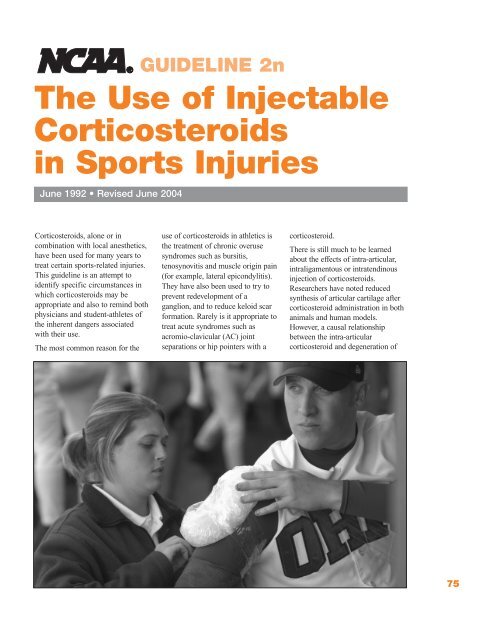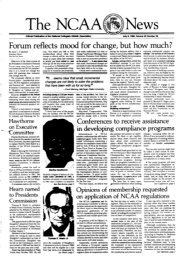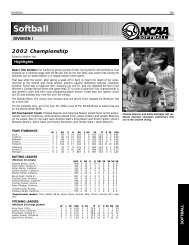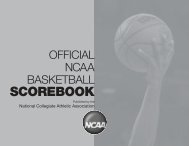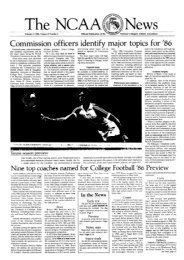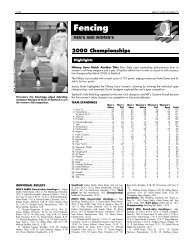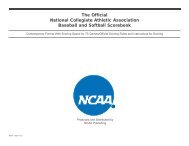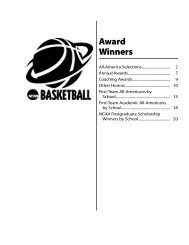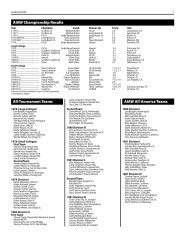Sports Medicine Handbook - NCAA
Sports Medicine Handbook - NCAA
Sports Medicine Handbook - NCAA
You also want an ePaper? Increase the reach of your titles
YUMPU automatically turns print PDFs into web optimized ePapers that Google loves.
The Use of Injectable<br />
Corticosteroids<br />
in <strong>Sports</strong> Injuries<br />
June 1992 • Revised June 2004<br />
Corticosteroids, alone or in<br />
combination with local anesthetics,<br />
have been used for many years to<br />
treat certain sports-related injuries.<br />
This guideline is an attempt to<br />
identify specific circumstances in<br />
which corticosteroids may be<br />
appropriate and also to remind both<br />
physicians and student-athletes of<br />
the inherent dangers associated<br />
with their use.<br />
The most common reason for the<br />
GUIDELINE 2n<br />
use of corticosteroids in athletics is<br />
the treatment of chronic overuse<br />
syndromes such as bursitis,<br />
tenosynovitis and muscle origin pain<br />
(for example, lateral epicondylitis).<br />
They have also been used to try to<br />
prevent redevelopment of a<br />
ganglion, and to reduce keloid scar<br />
formation. Rarely is it appropriate to<br />
treat acute syndromes such as<br />
acromio-clavicular (AC) joint<br />
separations or hip pointers with a<br />
corticosteroid.<br />
There is still much to be learned<br />
about the effects of intra-articular,<br />
intraligamentous or intratendinous<br />
injection of corticosteroids.<br />
Re searchers have noted reduced<br />
synthesis of articular cartilage after<br />
corticosteroid administration in both<br />
animals and human models.<br />
However, a causal relationship<br />
between the intra-articular<br />
corticosteroid and degeneration of<br />
75


